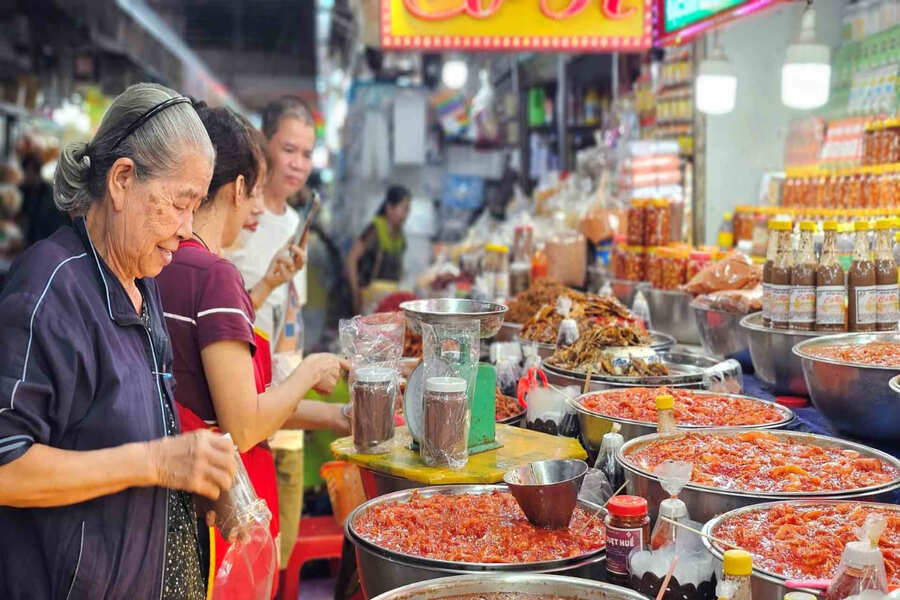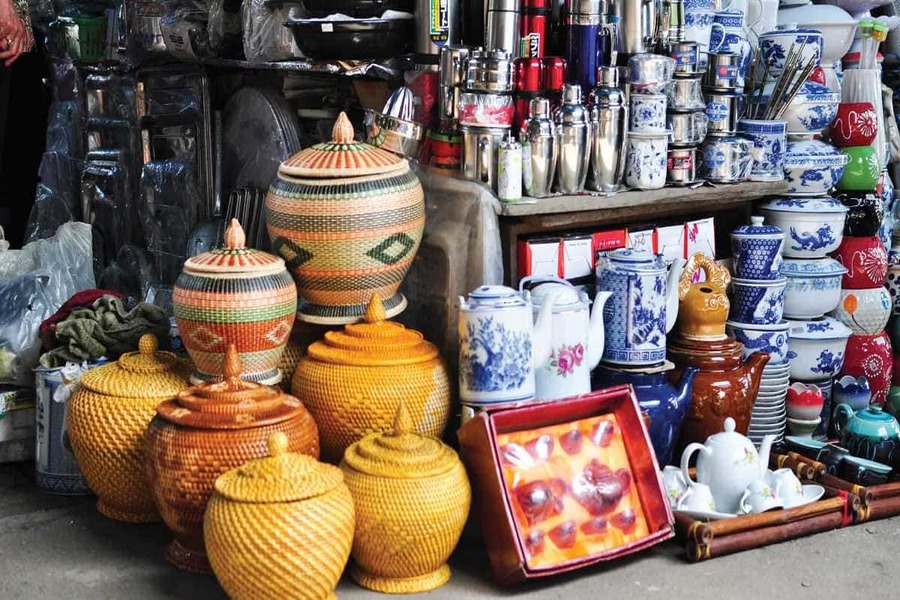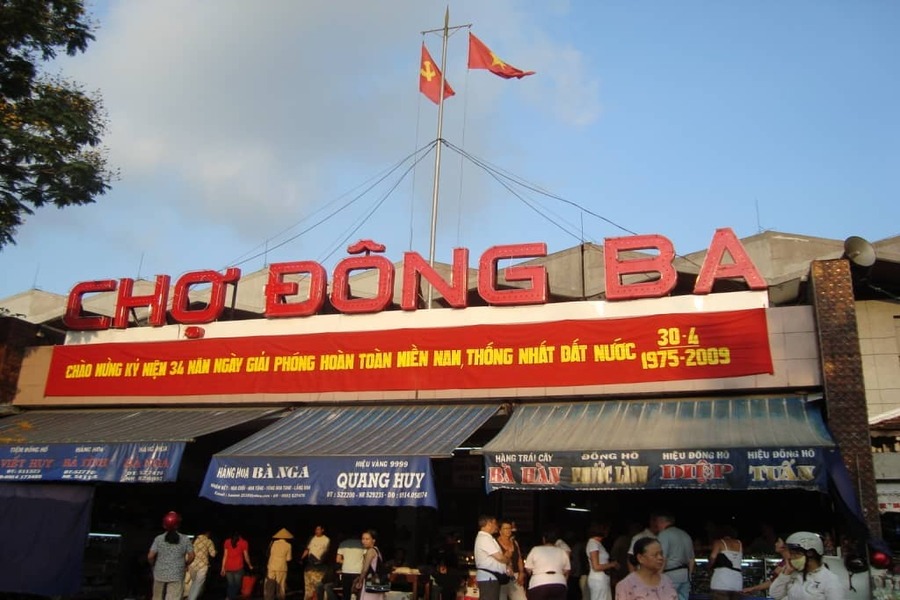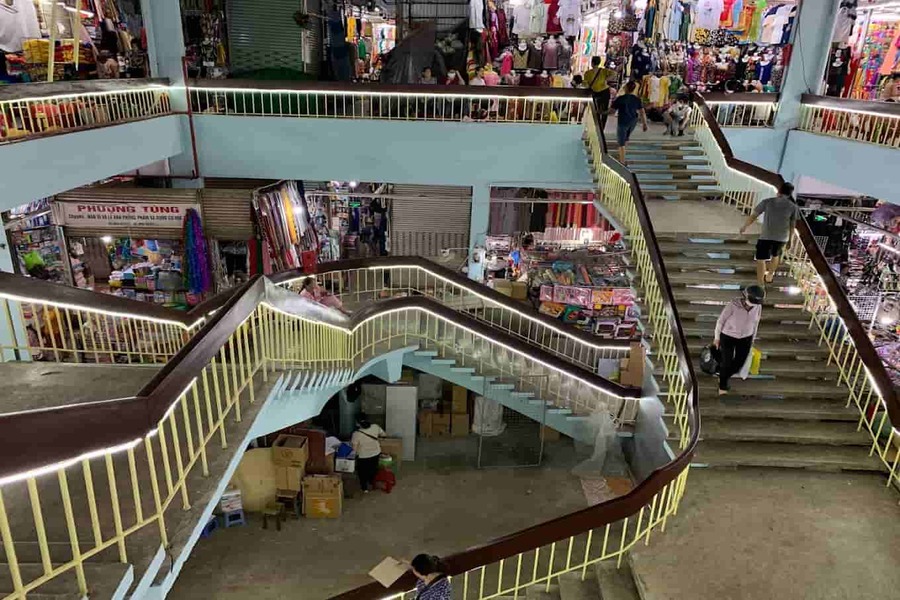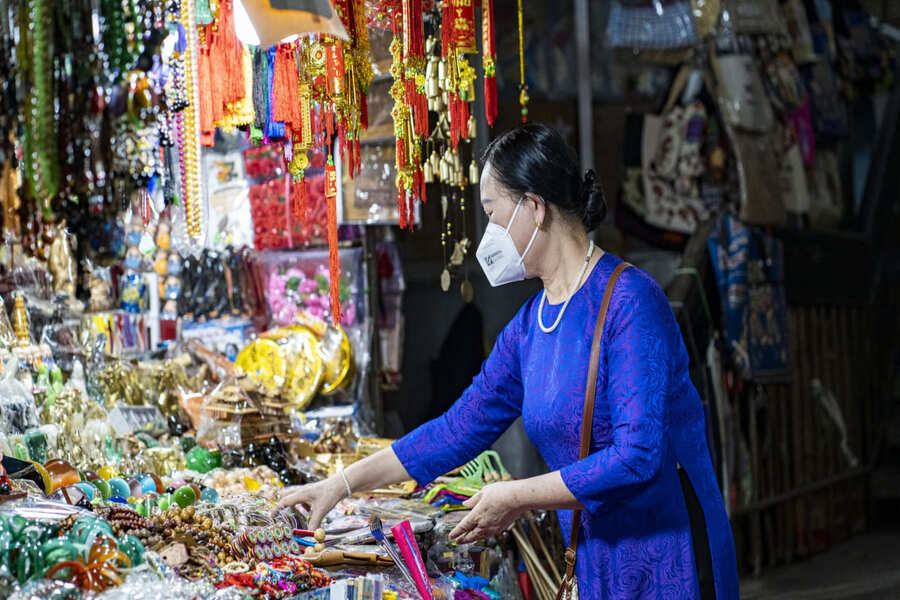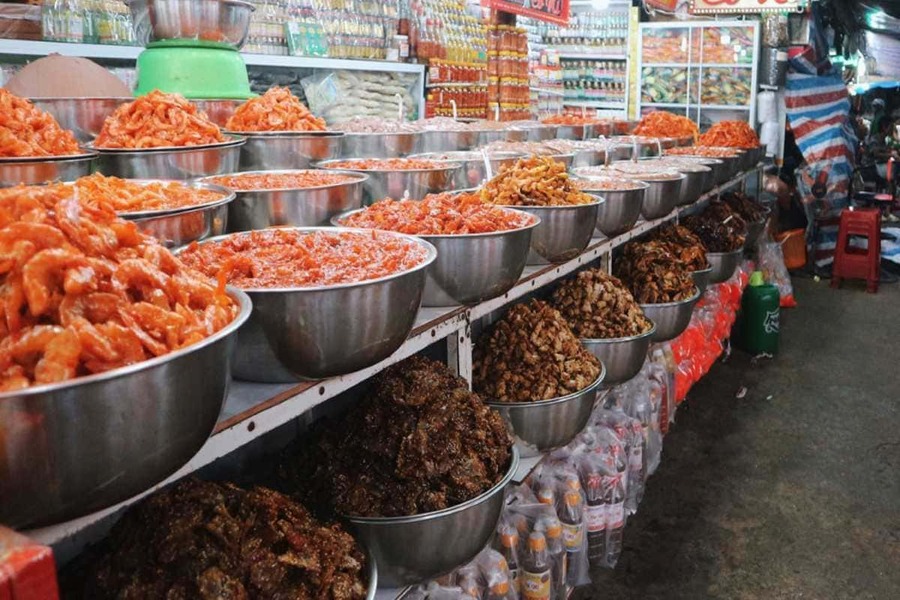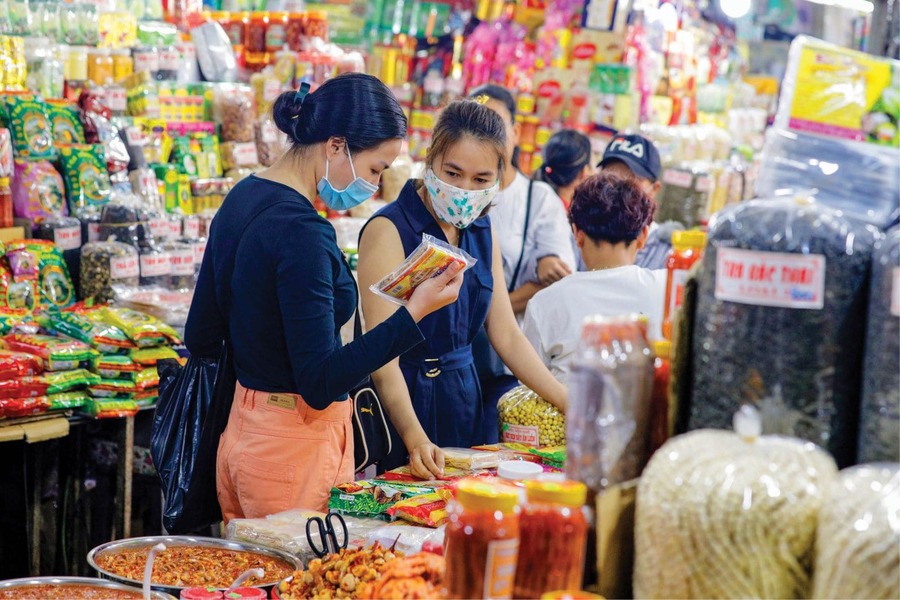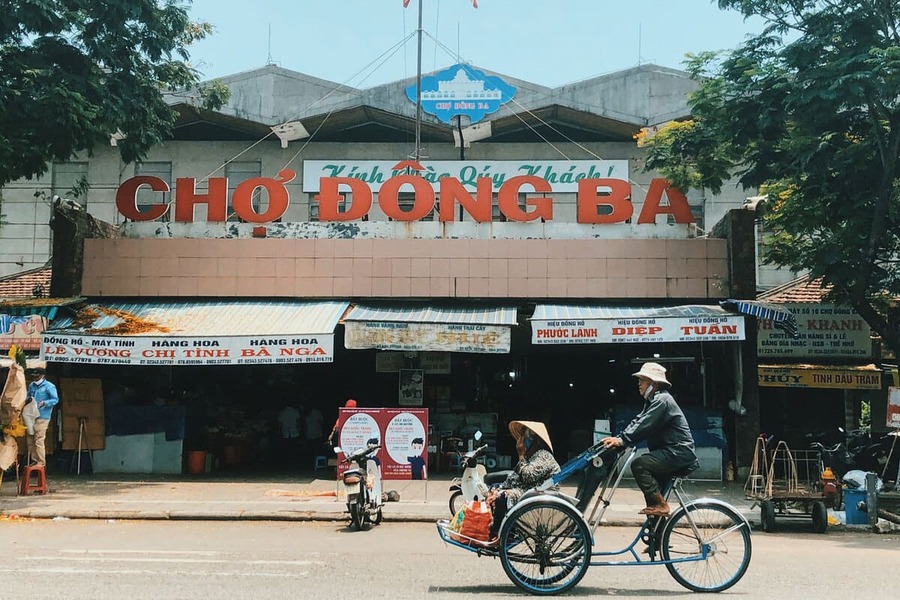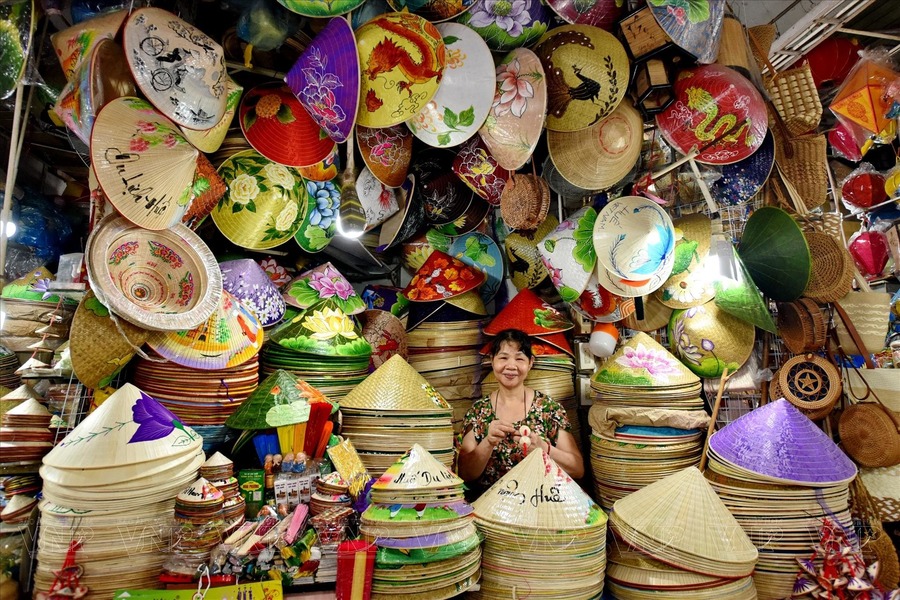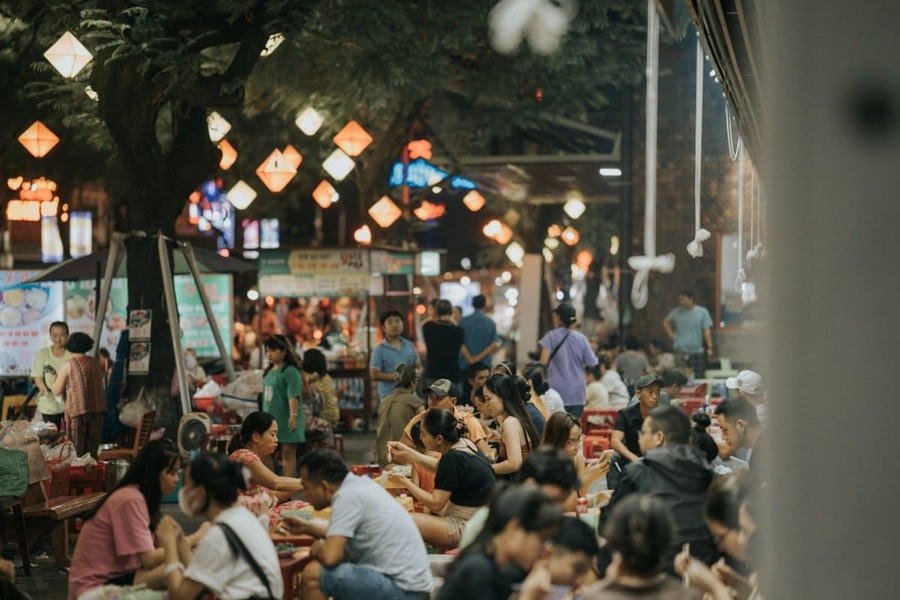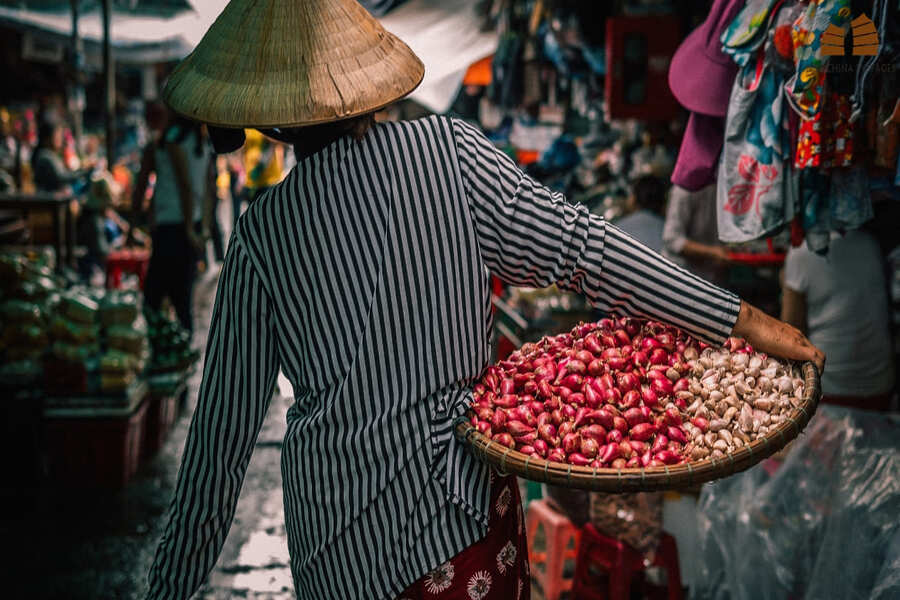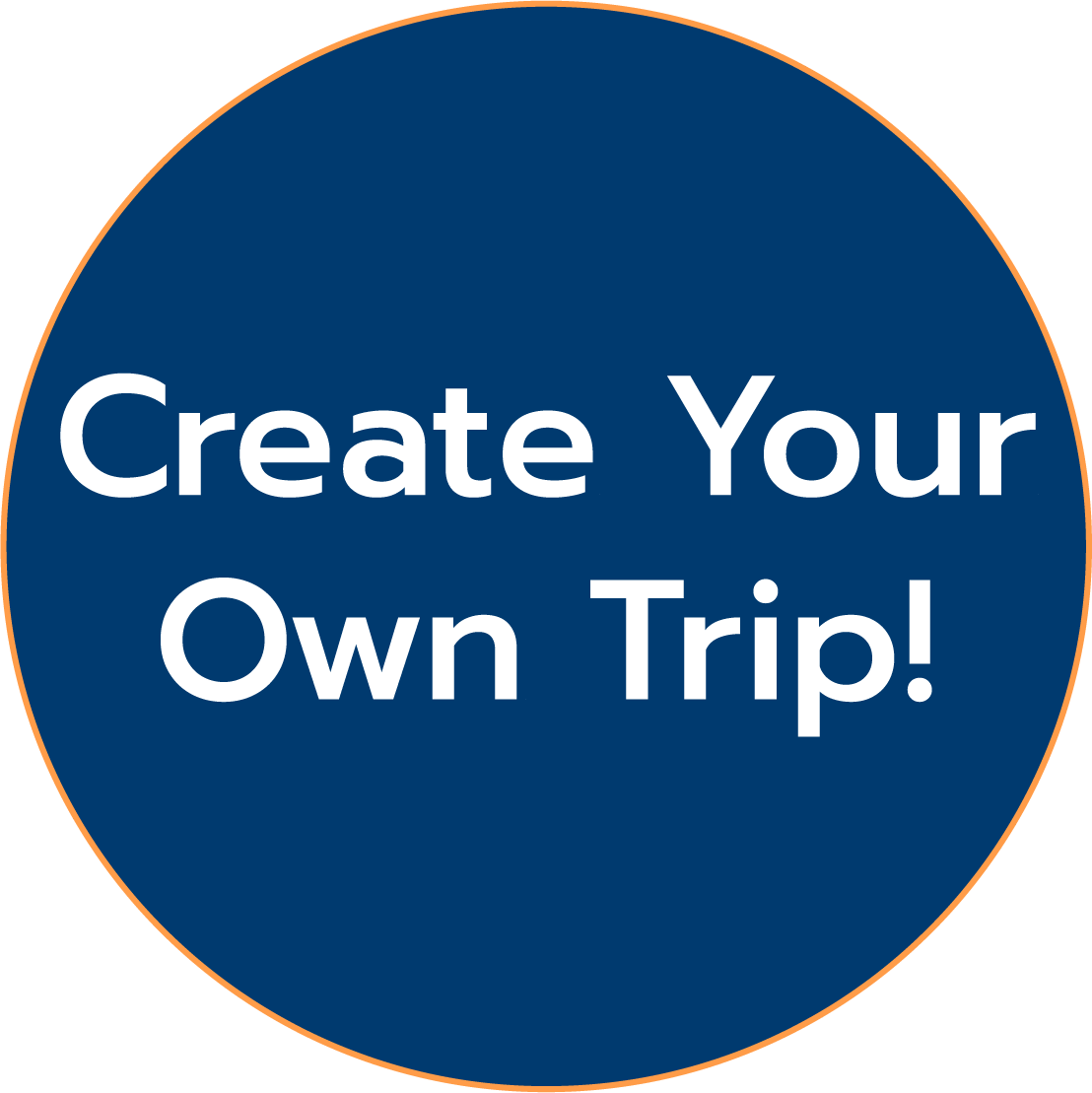Discover the Heart of Hue at Dong Ba Market
Nestled along the tranquil Perfume River in Hue, Vietnam, Dong Ba Market is a vibrant cornerstone of the city’s cultural and culinary heritage. As Hue’s largest and oldest marketplace, it has been a bustling hub since the 19th century, drawing thousands of locals and travelers daily. With an estimated 5,000 visitors each day, according to the Vietnam National Administration of Tourism, this iconic market offers a sensory feast of sights, sounds, and flavors. From savoring a steaming bowl of bun bo Hue to browsing handmade crafts, Dong Ba Market captures the essence of Hue’s imperial past and lively present. This guide provides everything you need to know for the upcoming Vietnam tours, including its history, must-try foods, shopping tips, and practical advice for a memorable experience.
Why Visit Dong Ba Market in 2025?
Dong Ba Market is more than a place to shop—it’s a cultural experience that showcases Hue’s unique blend of history, cuisine, and community. Here’s why it’s a must-visit:
- Authentic Local Life: Engage with vendors and witness the daily rhythms of Hue’s residents, from early morning produce sales to evening street food stalls.
- Culinary Delights: Taste Hue’s world-famous dishes, such as spicy beef noodle soup, sweet soups, and crispy pancakes, all at budget-friendly prices.
- Unique Souvenirs: Find handmade conical hats, lacquerware, and custom-made ao dai, perfect for gifts or keepsakes.
- Historical Significance: Rooted in the Nguyen Dynasty, the market reflects Hue’s imperial legacy.
- Lively Atmosphere: With thousands of stalls across 47,600 square meters, the market buzzes with energy from dawn to dusk.
Whether you’re a food enthusiast, a history lover, or a curious traveler, Dong Ba Market offers an unforgettable glimpse into Hue’s soul.
A Brief History of Dong Ba Market
Dong Ba Market traces its origins to the early 19th century under Emperor Gia Long, when it was known as Quy Gia Thi Market, symbolizing the Nguyen Dynasty’s return to Phu Xuan (modern-day Hue). Originally located outside the Chanh Dong Gate, it thrived as a trade hub until it was destroyed in 1885 during a colonial attack. In 1887, Emperor Dong Khanh rebuilt and renamed it Dong Ba Market, establishing its enduring legacy. By 1899, Emperor Thanh Thai relocated it to its current site at 2 Tran Hung Dao Street, along the Perfume River, stretching from Gia Hoi Bridge to Truong Tien Bridge.
Despite challenges, including damage during the 1968 Tet Offensive, the market was revitalized with a major renovation in 1987, expanding to 47,614 square meters. Today, its iconic three-story “bell tower” and U-shaped vendor stalls blend traditional Vietnamese architecture with modern functionality, making it a living symbol of Hue’s resilience and cultural heritage.
Navigating Dong Ba Market: A Layout Guide
Spanning nearly 16,000 square meters, Dong Ba Market is a sprawling complex with a three-story central building and vibrant outdoor stalls. Here’s how to explore its key areas:
- Ground Floor: The heart of the market, featuring fresh produce, seafood, meat, and Hue’s specialty dried goods like fish sauce and dried shrimp. The food court, seating around 200, offers authentic dishes like bun bo Hue and banh khoai.
- Second Floor: A treasure trove of handicrafts, including conical hats, Phuoc Tich ceramics, and bamboo products, ideal for souvenirs.
- Third Floor: Dedicated to textiles and clothing, with stalls offering fabrics for custom-made ao dai and ready-to-wear traditional garments.
- Outdoor Stalls: Surrounding the main building, these vendors sell fruits, flowers, electronics, and street food, adding to the market’s lively vibe.
Travel Tip: Begin on the third floor for textiles, move to the second for crafts, and end at the ground floor for food to explore efficiently. Visit after 3:00 PM to avoid peak crowds.
Culinary Highlights: Savoring Hue’s Flavors at Dong Ba Market
Hue is renowned for its delicate, imperial-inspired cuisine, and Dong Ba Market is the perfect place to experience it. Here are the must-try dishes and where to find them:
Bun Bo Hue: Hue’s Signature Dish
A visit to Dong Ba Market isn’t complete without tasting bun bo Hue, the city’s iconic spicy beef noodle soup. Made with a fragrant lemongrass broth, tender beef, chewy rice noodles, and a kick of chili, this dish is a Vietnamese favorite. Vendors in the ground floor food court serve authentic versions for 20,000-30,000 VND ($0.80-$1.20) per bowl. The communal dining area provides a clean, lively setting to enjoy this culinary gem.
Travel Tip: Seek out stalls with long lines of locals for the freshest bun bo Hue. Pair it with fresh herbs and a squeeze of lime for the full experience.
Other Must-Try Hue Specialties
- Banh Khoai: Crispy fried pancakes stuffed with shrimp, pork, and bean sprouts, served with peanut sauce (30,000-50,000 VND/$1.20-$2).
- Nam Pho Noodle Soup: A sweet-savory broth with shrimp and crab, perfect for a quick snack (5,000-10,000 VND/$0.20-$0.40).
- Che Hue: Sweet soups in flavors like mung bean, lotus seed, or corn, topped with coconut milk (10,000-20,000 VND/$0.40-$0.80).
- Clam Rice: Fragrant rice mixed with fresh clams, a Hue classic (20,000-40,000 VND/$0.80-$1.60).
- Spring Rolls with Pork Lemongrass Skewer: A flavorful appetizer combining fresh rolls and grilled skewers (40,000-55,000 VND/$1.60-$2.20).
Travel Tip: Explore the outdoor stalls after 3:00 PM for a wider variety of street food, including banh beo, banh loc, and banh nam, all under 20,000 VND ($0.80).
The Food Court Experience
The ground floor food court, often referred to as the Dong Ba restaurant area, is a bustling hub with dozens of stalls surrounding a dining space for 200 people. Open from 6:00 AM, it’s ideal for breakfast dishes like pho, fresh spring rolls, and stuffed omelets. For lunch or dinner, try a full menu featuring Hue classics. Outdoor vendors offer a more casual dining experience, perfect for sampling quick bites like sweet soups or grilled skewers.
Travel Tip: Bring small-denomination cash (10,000-50,000 VND notes) as most vendors don’t accept cards. Budget around 100,000 VND ($4) for a hearty meal with drinks.
Shopping at Dong Ba Market: Unique Finds and Souvenirs
Dong Ba Market is a shopper’s paradise, offering everything from daily essentials to one-of-a-kind Vietnamese crafts. Here’s what to look for:
- Ao Dai and Textiles: The third floor is the go-to spot for fabrics and custom-made ao dai, Hue’s traditional long dress. Tailors can create a custom piece in 24-48 hours for 500,000-1,000,000 VND ($20-$40).
- Conical Hats (Non La): Handcrafted in Phu Cam Village, some feature woven poems for a unique touch (50,000-100,000 VND/$2-$4).
- Lacquerware: Bowls, trays, and vases showcasing Hue’s artistry (100,000-500,000 VND/$4-$20).
- Silk Paintings: Depicting Vietnamese landscapes and cultural scenes, ideal for home decor (200,000-1,000,000 VND/$8-$40).
- Local Delicacies: Pick up Hue sesame sweetmeats (me xung), Tuan tea, or Tinh Tam lotus seeds for edible gifts (20,000-50,000 VND/$0.80-$2).
Travel Tip: Bargaining is common at Dong Ba Market. Start at 50-60% of the quoted price and settle around 70%. Always negotiate politely, as vendors rely on these sales.
Practical Tips for Visiting Dong Ba Market in 2025
To make your visit to Dong Ba Market seamless and enjoyable, follow these practical tips:
Best Time to Visit
- Morning (6:00 AM-10:00 AM): Perfect for fresh produce and breakfast dishes like bun bo Hue. The market is lively but less crowded.
- Early Afternoon (3:00 PM-6:00 PM): Ideal for shopping and street food, with fewer tourists and a relaxed vibe.
- Evening (6:00 PM-8:30 PM): The Dong Ba Night Market comes alive with street food and a festive atmosphere, offering lower prices for snacks.
Travel Tip: Visit in the early afternoon to combine shopping and dining while avoiding peak crowds.
Getting to Dong Ba Market
Located at 2 Tran Hung Dao Street, Phu Hoa, Hue City, Dong Ba Market is easily accessible:
- From Phu Bai Airport: 16 km away, take a taxi (200,000 VND/$8) or motorbike taxi (100,000 VND/$4) for a 30-minute ride.
- From Hue City Center: Walk 10-15 minutes from Trang Tien Bridge or take a cyclo (50,000 VND/$2) for a scenic journey.
- By Bus: Hue city buses stop 200 meters from the market (5,000 VND/$0.20).
- By Boat: Some locals use the Dong Ba Canal from Vi Da Boat Station, but this isn’t recommended for tourists due to safety concerns.
Travel Tip: Park motorbikes (5,000 VND/$0.20) or cars (30,000 VND/$1.20) at the market’s gate for convenience.
Navigating the Market
- Layout: Start on the third floor for textiles, move to the second for crafts, and end at the ground floor for food. Outdoor stalls are great for quick snacks.
- Crowds: Expect 5,000-7,000 daily visitors, doubling during holidays like Tet (January-February). Watch for pickpockets in busy areas.
- Language: Learn basic Vietnamese phrases like “bao nhieu?” (how much?) or “cam on” (thank you) to enhance vendor interactions.
Travel Tip: Wear comfortable shoes and carry a reusable bag to manage purchases and reduce waste.
Budgeting for Your Visit
A day at Dong Ba Market is budget-friendly:
- Food: 50,000-100,000 VND ($2-$4) for a meal with drinks, including bun bo Hue or sweet soups.
- Souvenirs: 50,000-500,000 VND ($2-$20) for conical hats, lacquerware, or tea.
- Transport: 5,000-200,000 VND ($0.20-$8) depending on your travel mode.
- Total: Budget 200,000-500,000 VND ($8-$20) for a full day of eating and shopping.
Travel Tip: Carry small-denomination cash for easier transactions with vendors.
Safety and Cultural Etiquette
- Bargaining: Haggle politely and commit to buying if you agree on a price. Avoid early morning haggling without purchasing, as it’s considered bad luck.
- Safety: Keep valuables secure in crowded areas to avoid pickpocketing. Use a money belt or crossbody bag.
- Respect: Dress modestly (cover shoulders and knees) and ask permission before photographing vendors or stalls.
- Sustainability: Support local artisans by buying handmade goods and avoid single-use plastics.
Travel Tip: Smile and engage with vendors for a warmer, more authentic experience.
Pairing Dong Ba Market with Other Hue Attractions
Dong Ba Market’s central location makes it easy to combine with Hue’s top sights:
- Hue Imperial Citadel: Just 1 km away, this UNESCO World Heritage Site showcases Nguyen Dynasty history (150,000 VND/$6 entry, 10-minute walk).
- Thien Mu Pagoda: 4 km away, a serene 17th-century pagoda reachable by cyclo or boat (free entry, 15-minute ride).
- Perfume River Boat Tour: Depart from nearby docks for a scenic cruise (100,000 VND/$4, 1 hour).
- Quoc Hoc Hue School: A historic French colonial school 1.5 km away (free entry, 10-minute walk).
Travel Tip: Spend the morning at the Imperial Citadel, then head to Dong Ba Market in the afternoon for shopping and dining.
Sample One-Day Itinerary at Dong Ba Market
Here’s a suggested itinerary for a full day at Dong Ba Market in 2025:
- 6:00 AM-8:00 AM: Arrive early for breakfast in the food court. Enjoy bun bo Hue (20,000 VND/$0.80) and a sweet corn soup (10,000 VND/$0.40).
- 8:00 AM-10:00 AM: Browse the ground floor for fresh produce and dried goods like fish sauce. Sample nam pho noodle soup (5,000 VND/$0.20).
- 10:00 AM-12:00 PM: Visit the third floor to shop for ao dai fabrics or a custom-made dress (500,000 VND/$20).
- 12:00 PM-1:30 PM: Lunch in the food court with banh khoai (30,000 VND/$1.20) and clam rice (20,000 VND/$0.80).
- 1:30 PM-3:30 PM: Explore the second floor for conical hats, lacquerware, and silk paintings (50,000-200,000 VND/$2-$8).
- 3:30 PM-5:00 PM: Check out outdoor stalls for street food like spring rolls (40,000 VND/$1.60) and fresh fruits.
- 5:00 PM-6:30 PM: Visit the Dong Ba Night Market for evening snacks and royal tea (50,000 VND/$2).
- Evening: Stroll along the Perfume River or take a boat tour (100,000 VND/$4) for a relaxing end to the day.
Travel Tip: Pace your visit to enjoy both shopping and dining without feeling rushed.
Why Dong Ba Market Is a Must-Visit in 2025
Dong Ba Market is a vibrant reflection of Hue’s cultural and culinary heritage, offering travelers a chance to connect with the city’s past and present. From its historical roots in the Nguyen Dynasty to its role as a bustling hub for locals and visitors, the market delivers an authentic experience. Whether you’re savoring a bowl of bun bo Hue, bargaining for a handmade conical hat, or soaking in the lively atmosphere, Dong Ba Market captures the essence of Hue. Its central location, affordable offerings, and diverse attractions make it an essential stop for anyone exploring Central Vietnam in 2025.
Dong Ba Market invites you to immerse yourself in Hue’s rich culture, from its imperial cuisine to its vibrant commerce. In 2025, explore its bustling stalls, taste iconic dishes, and discover unique crafts that tell the story of Vietnam’s former capital. Plan your visit with this guide and dive into the heart of Hue at Cho Dong Ba Hue Vietnam. Share your Dong Ba Market experiences or travel tips in the comments below!

